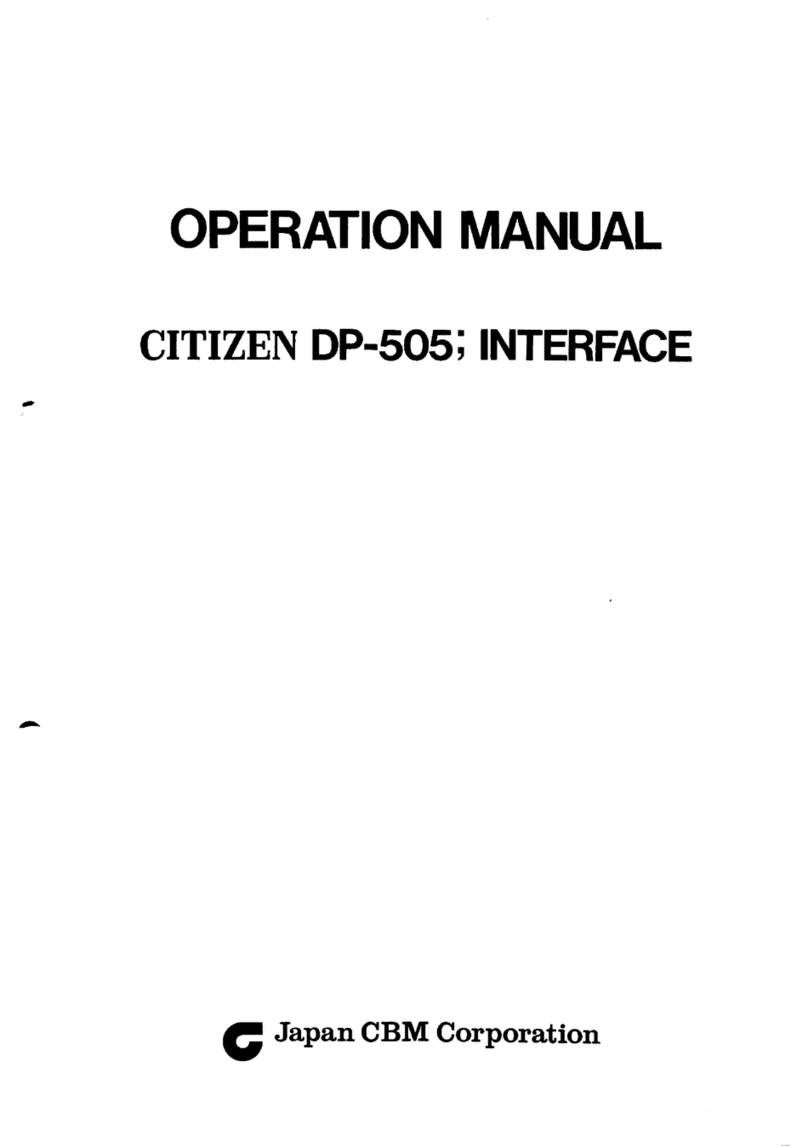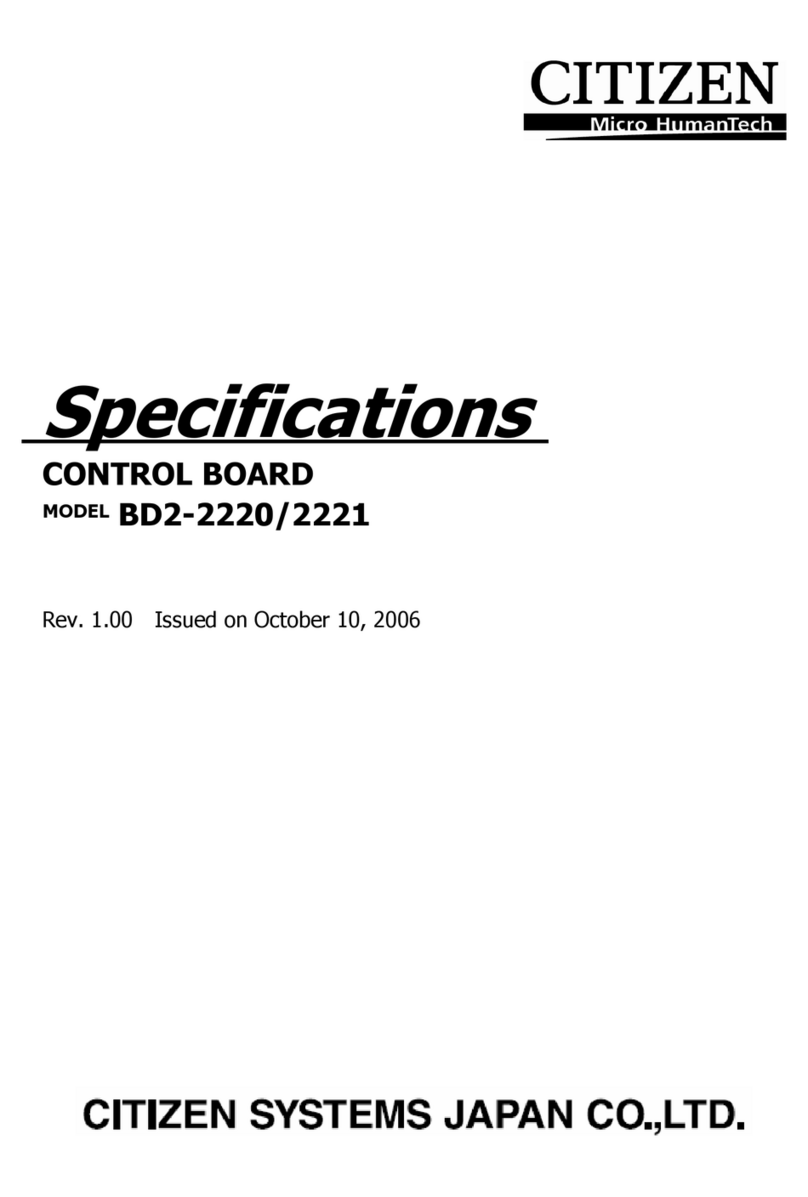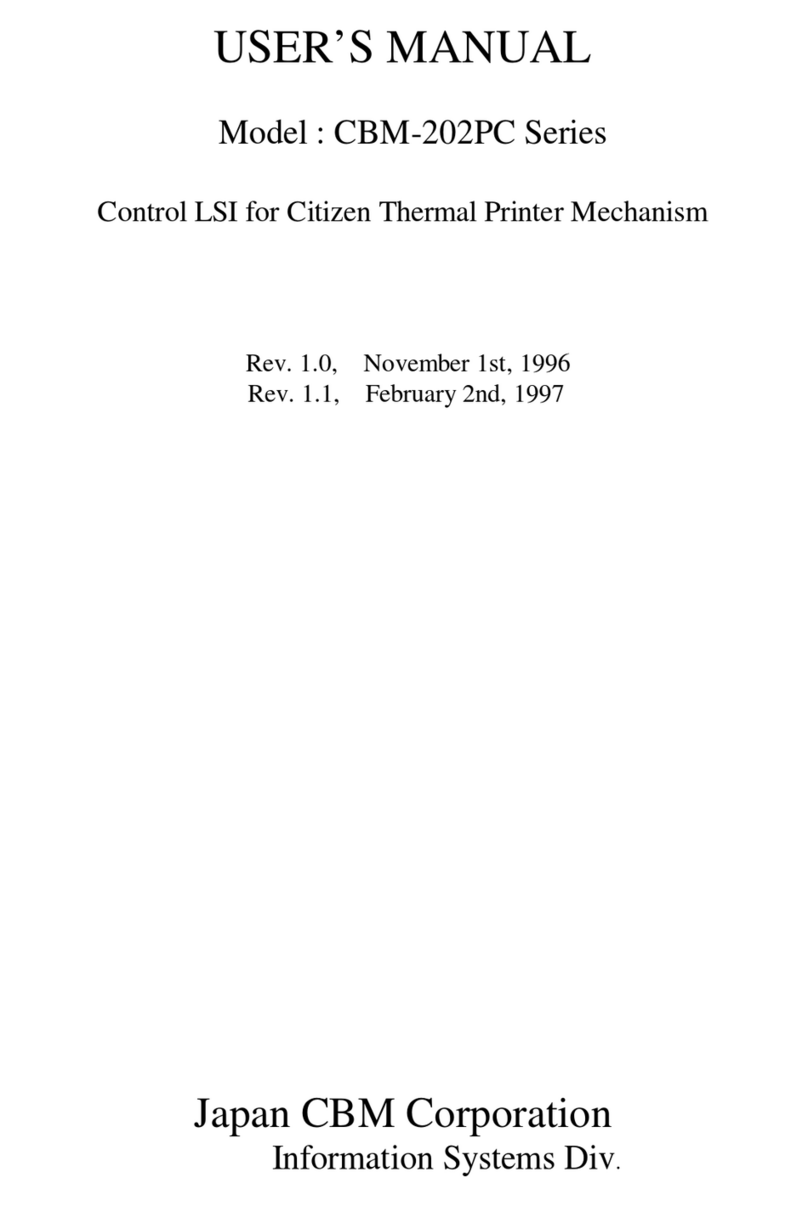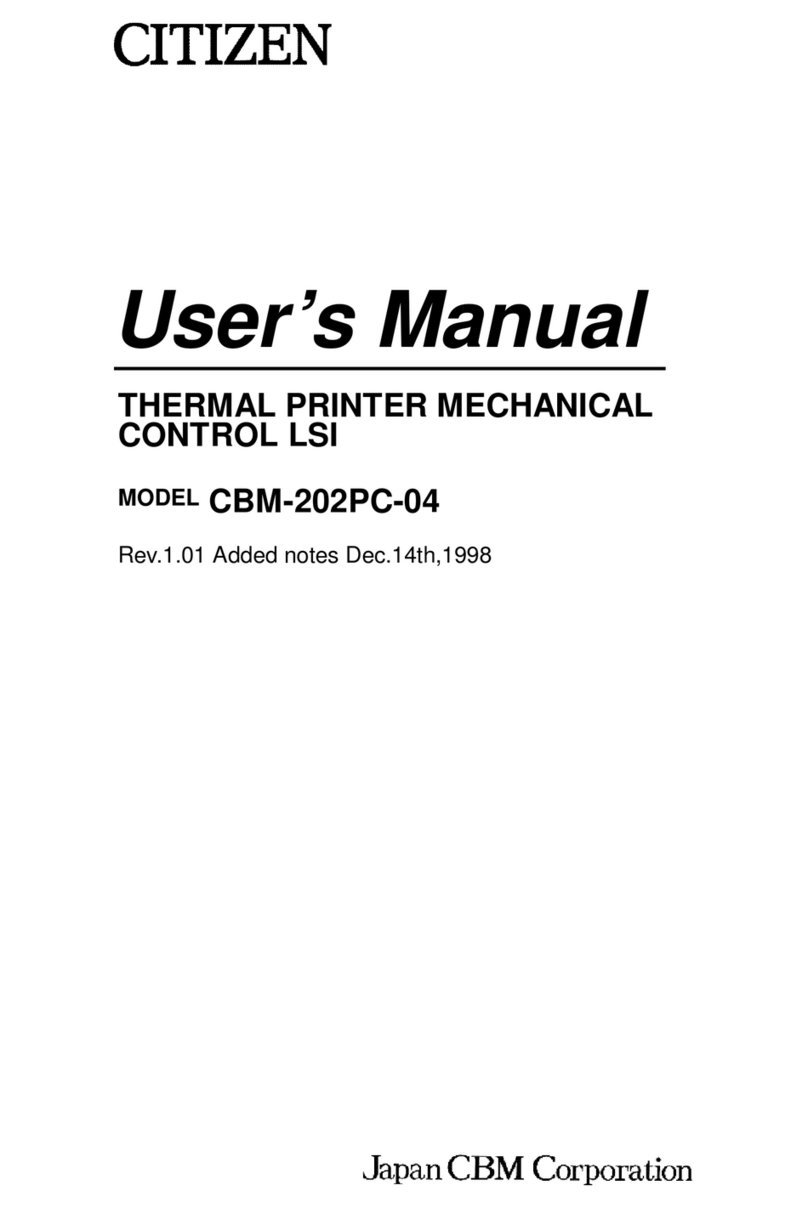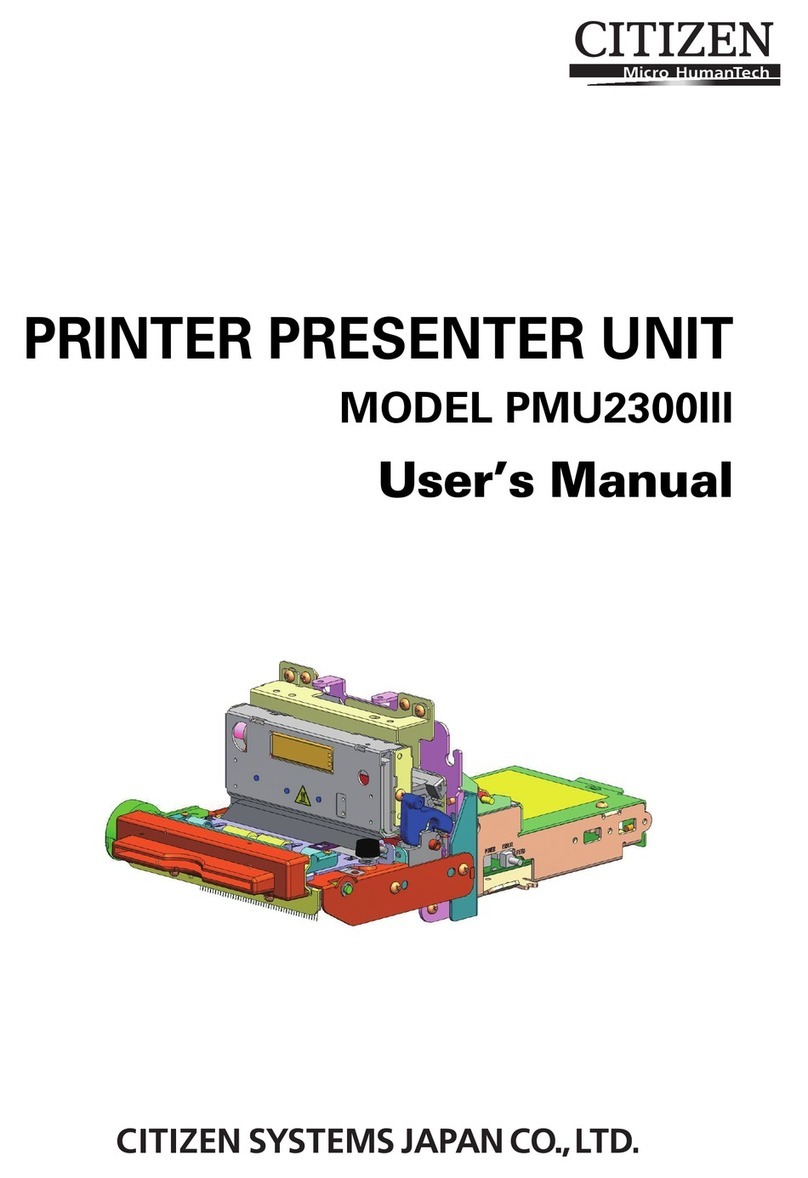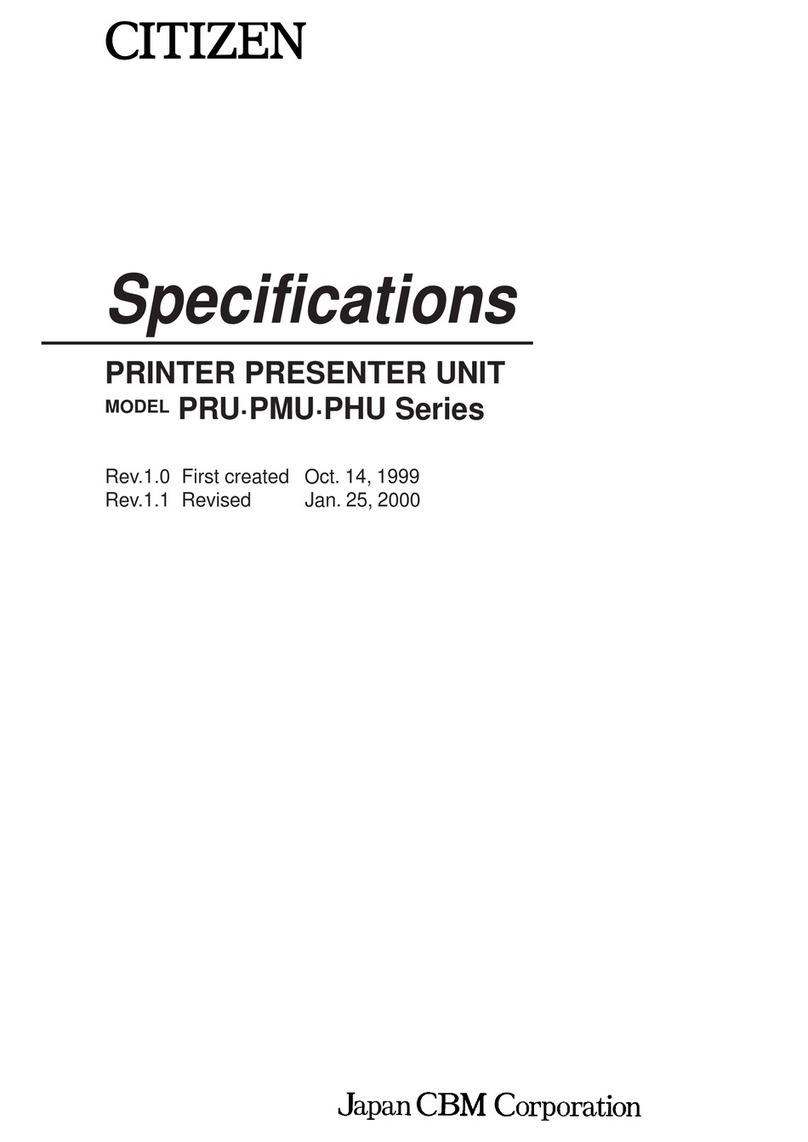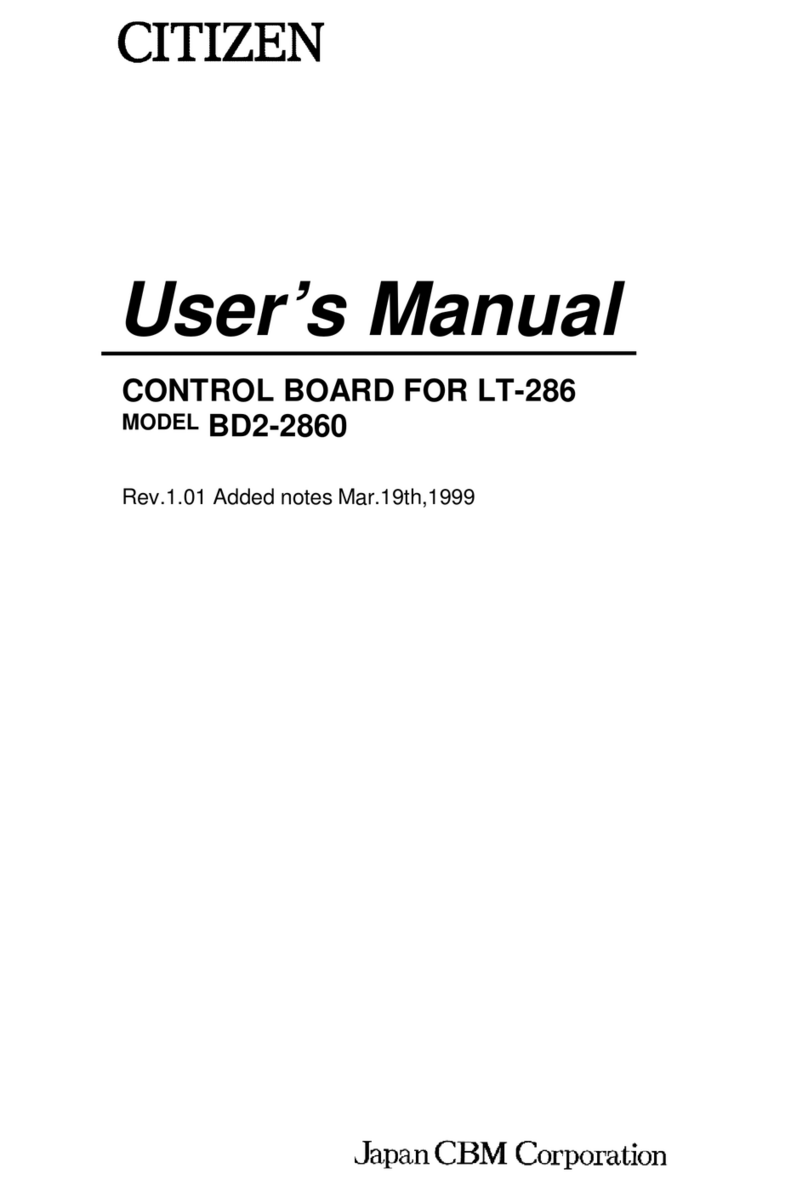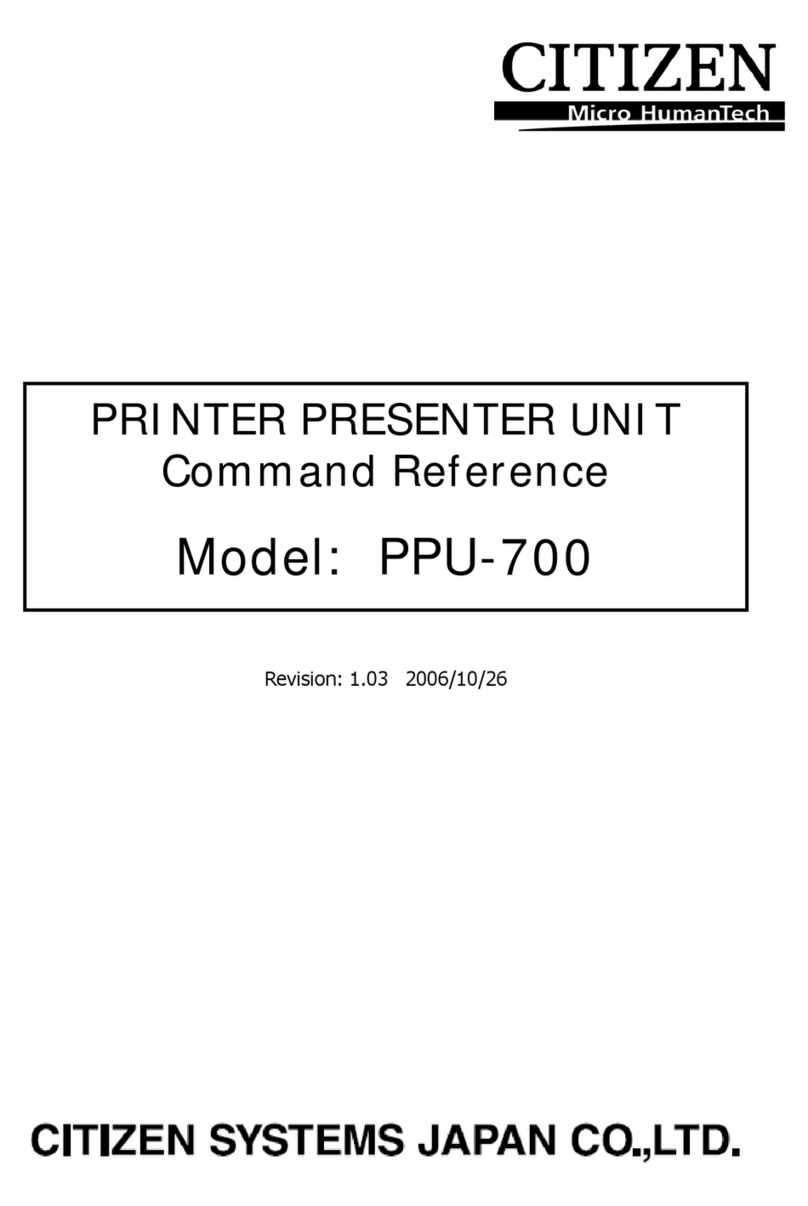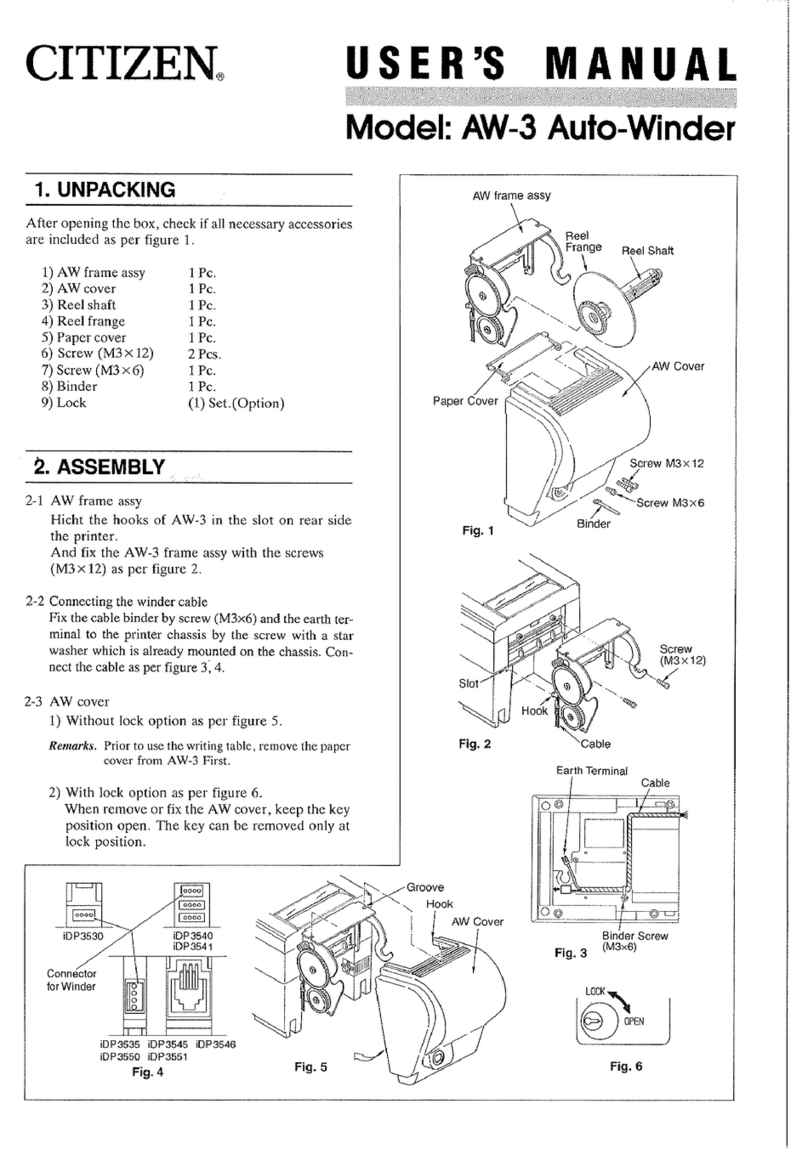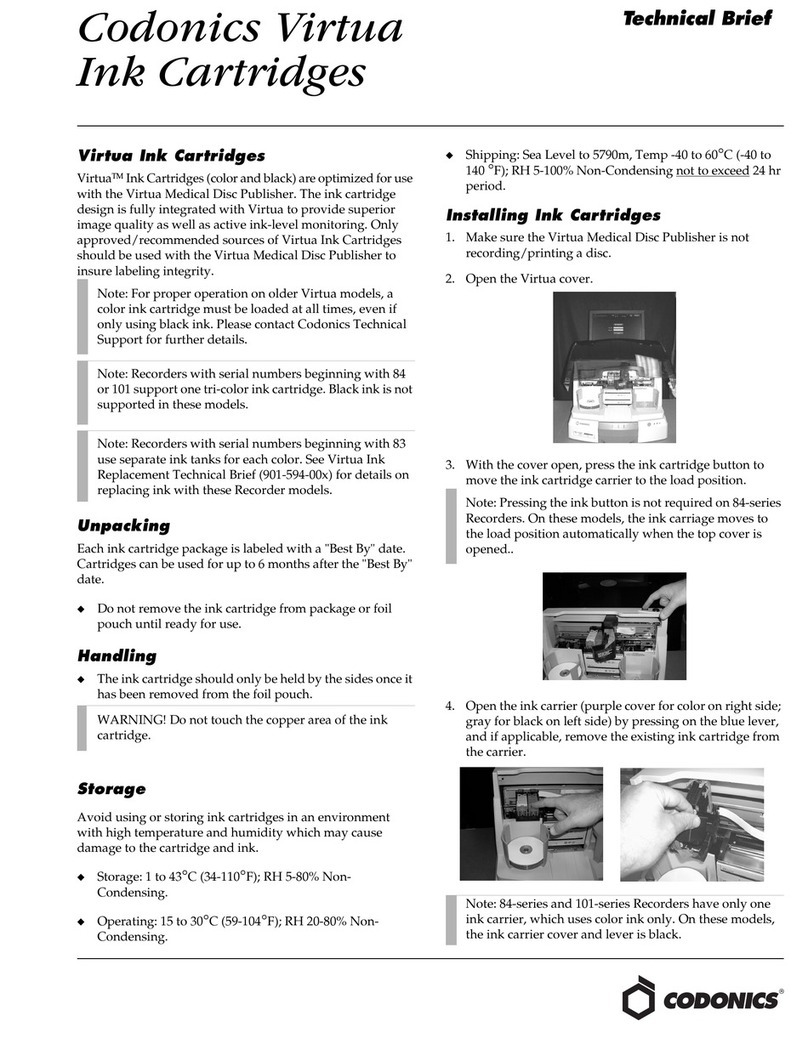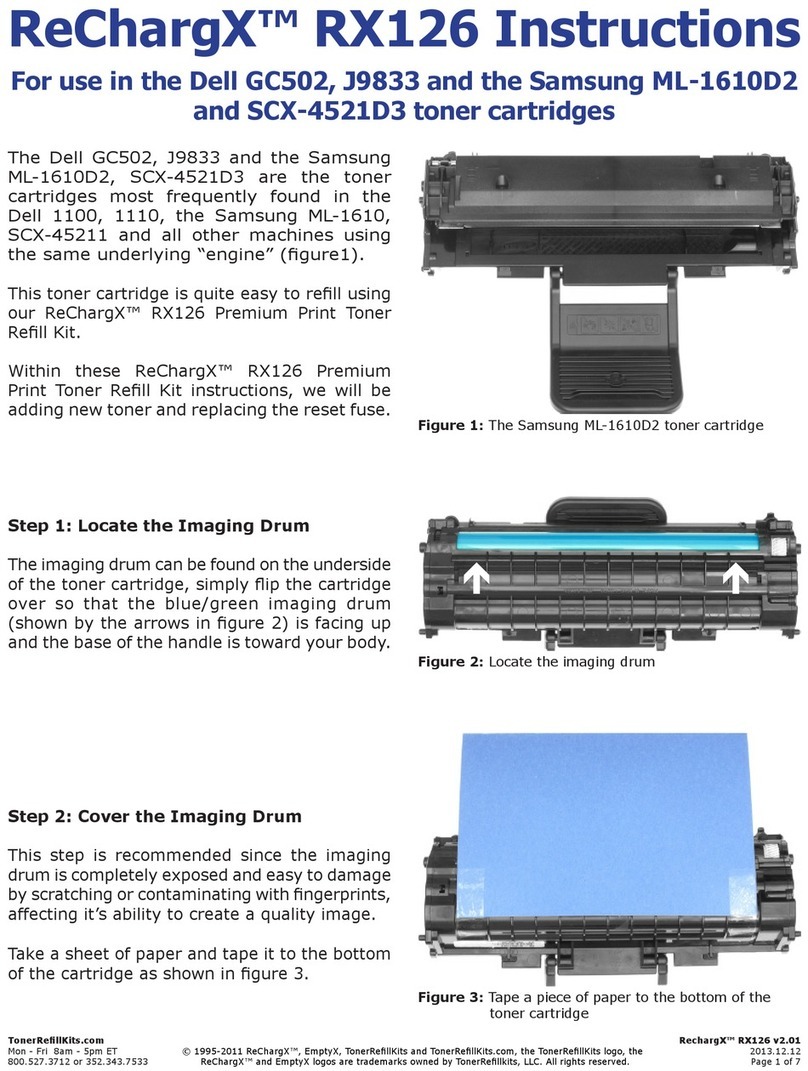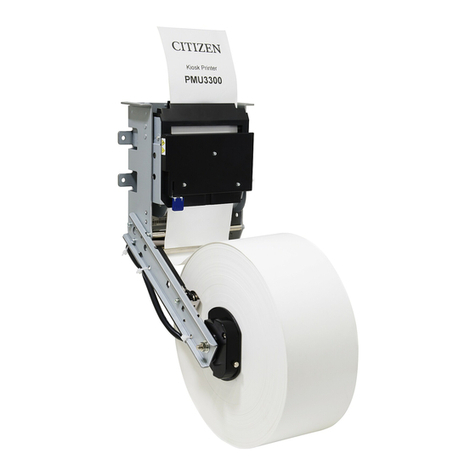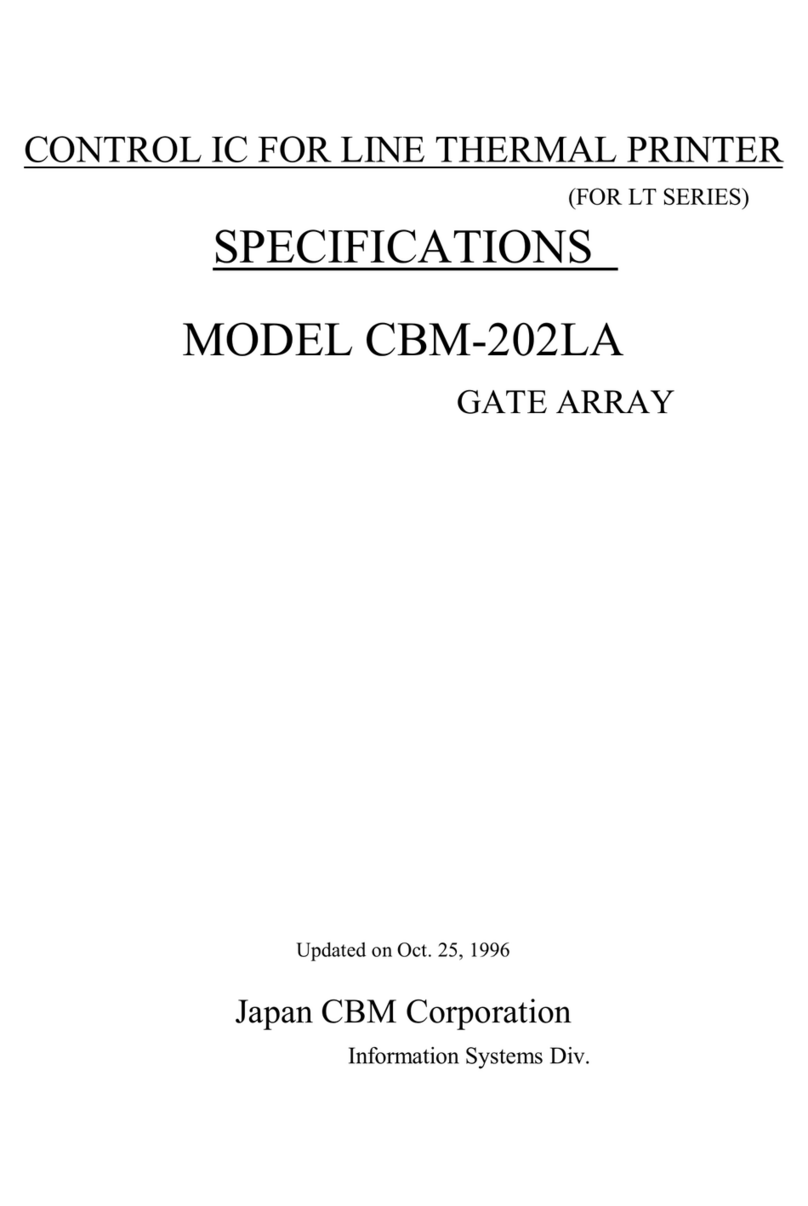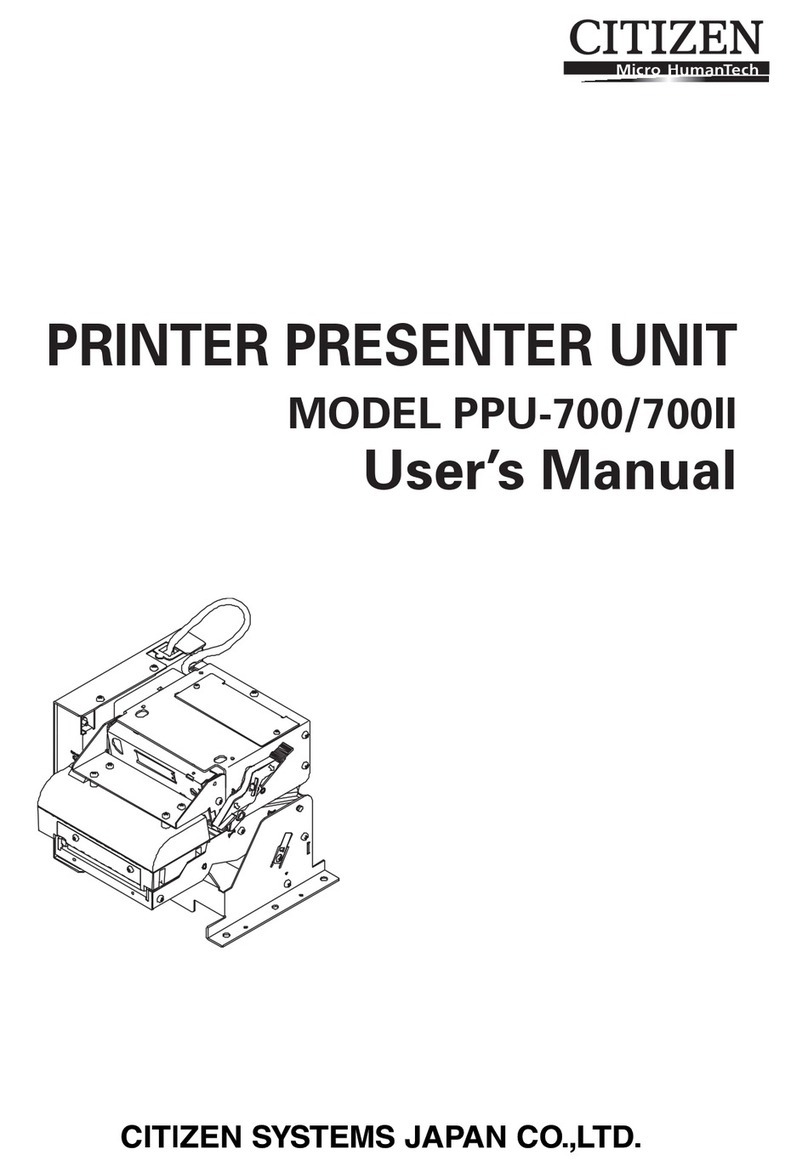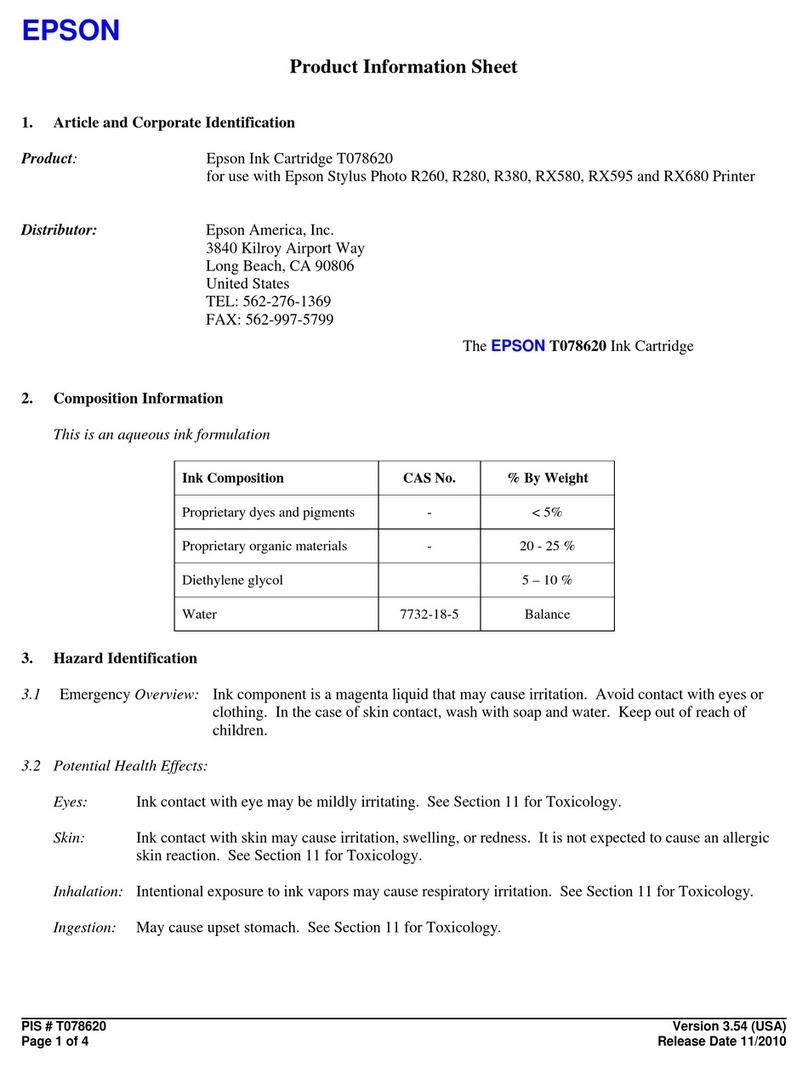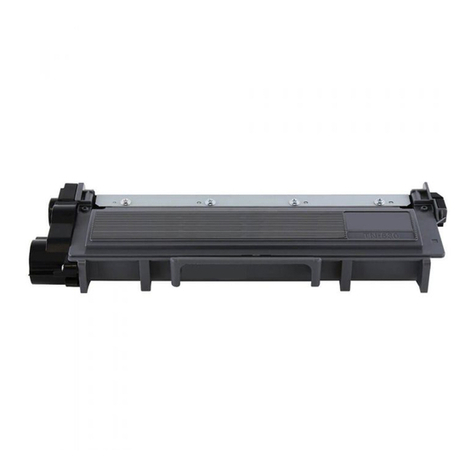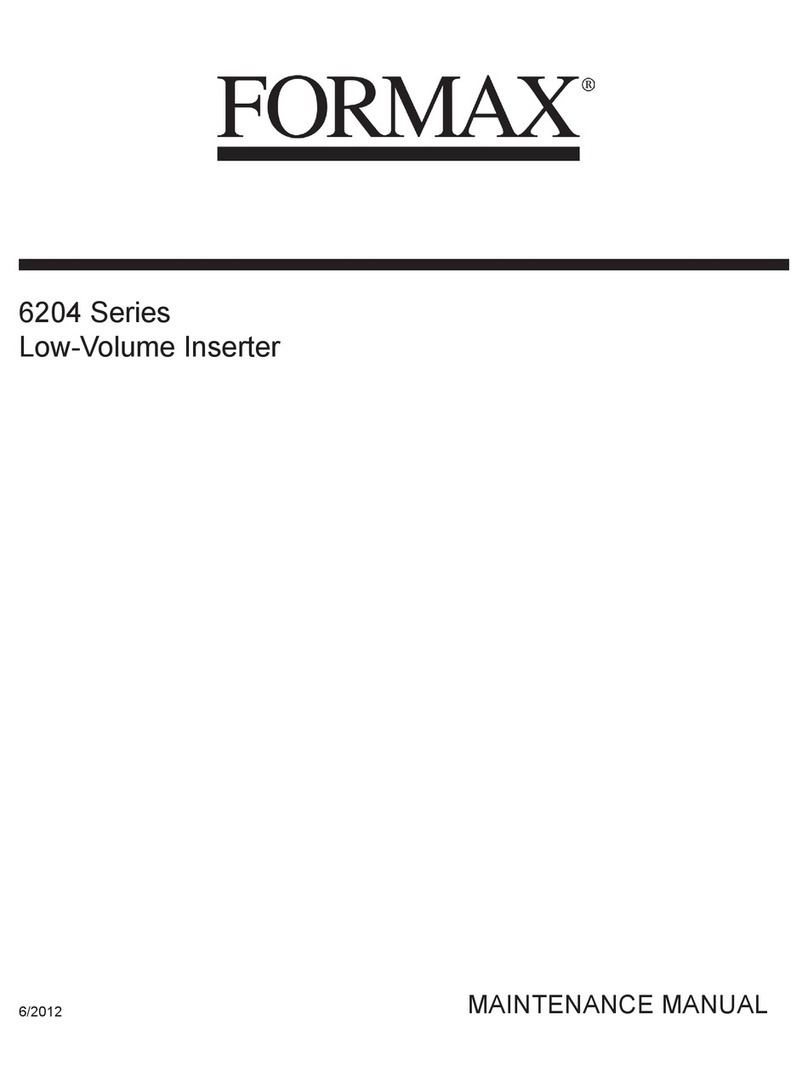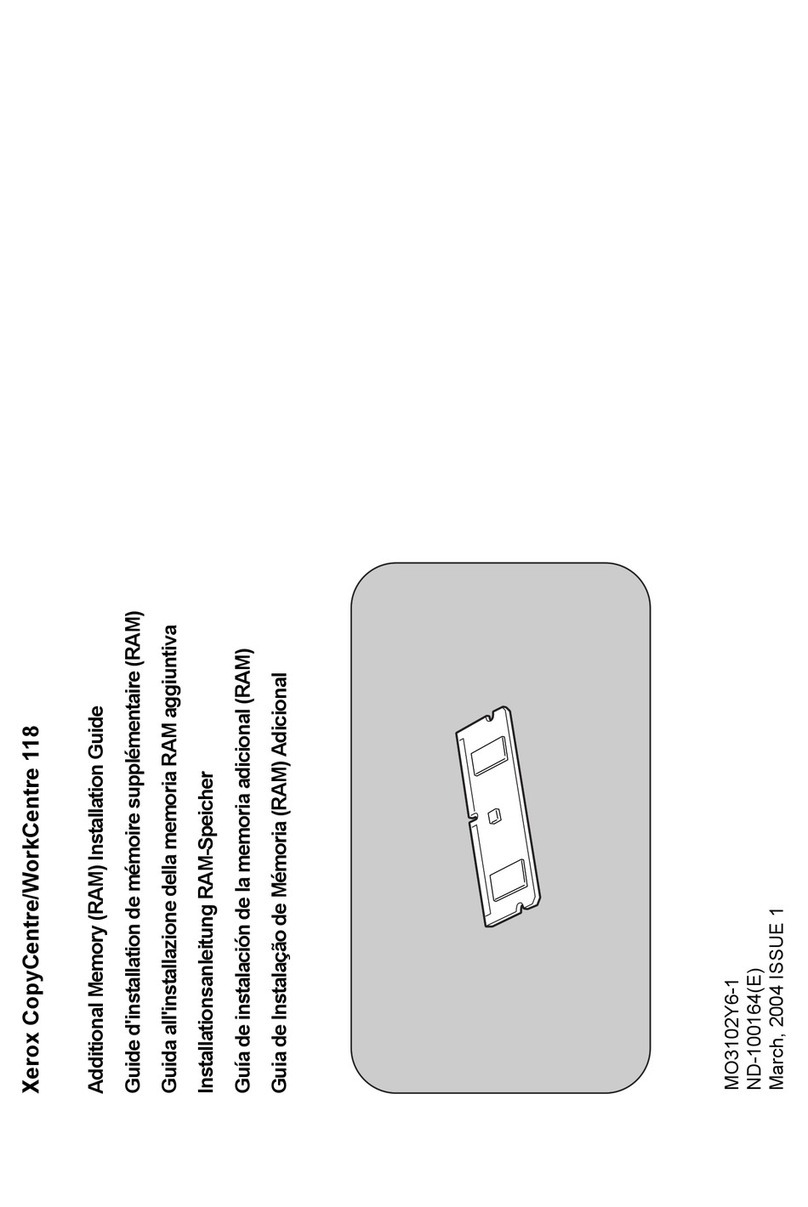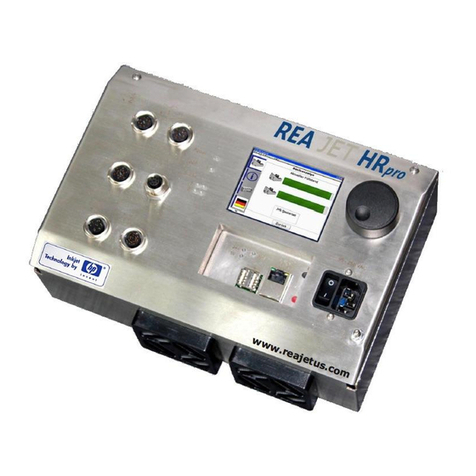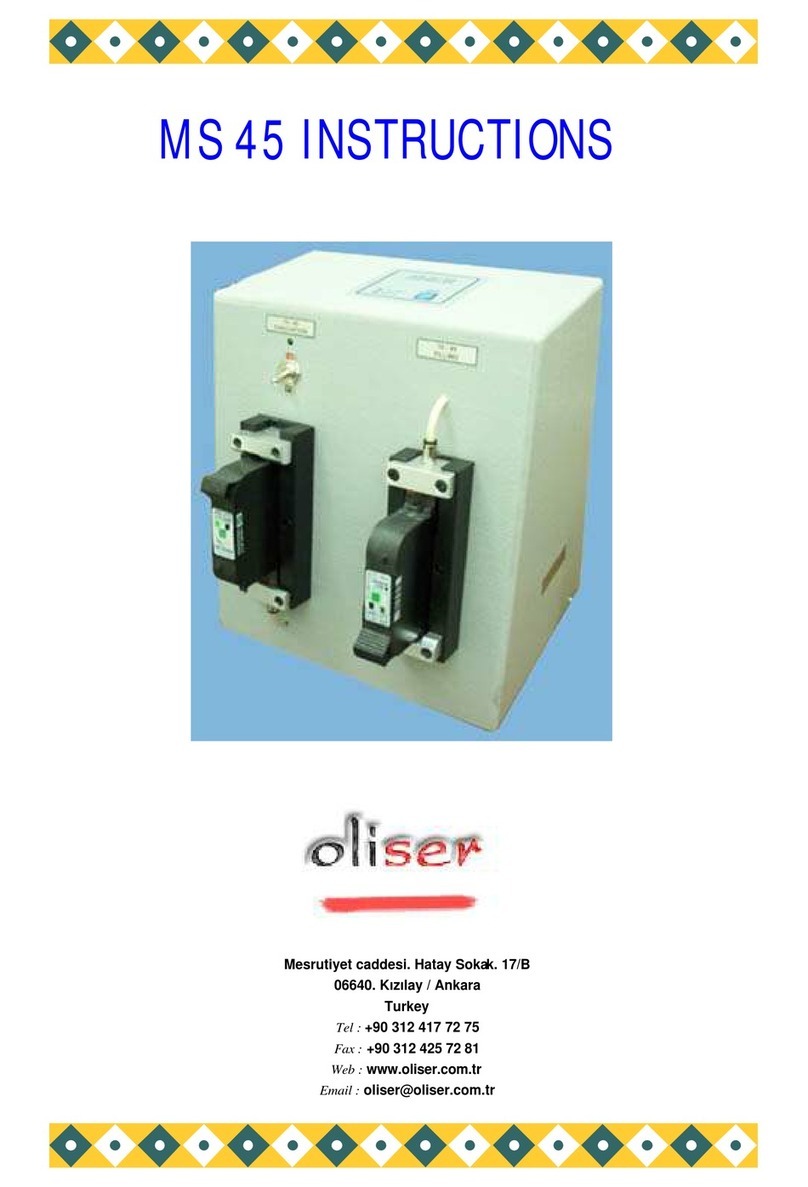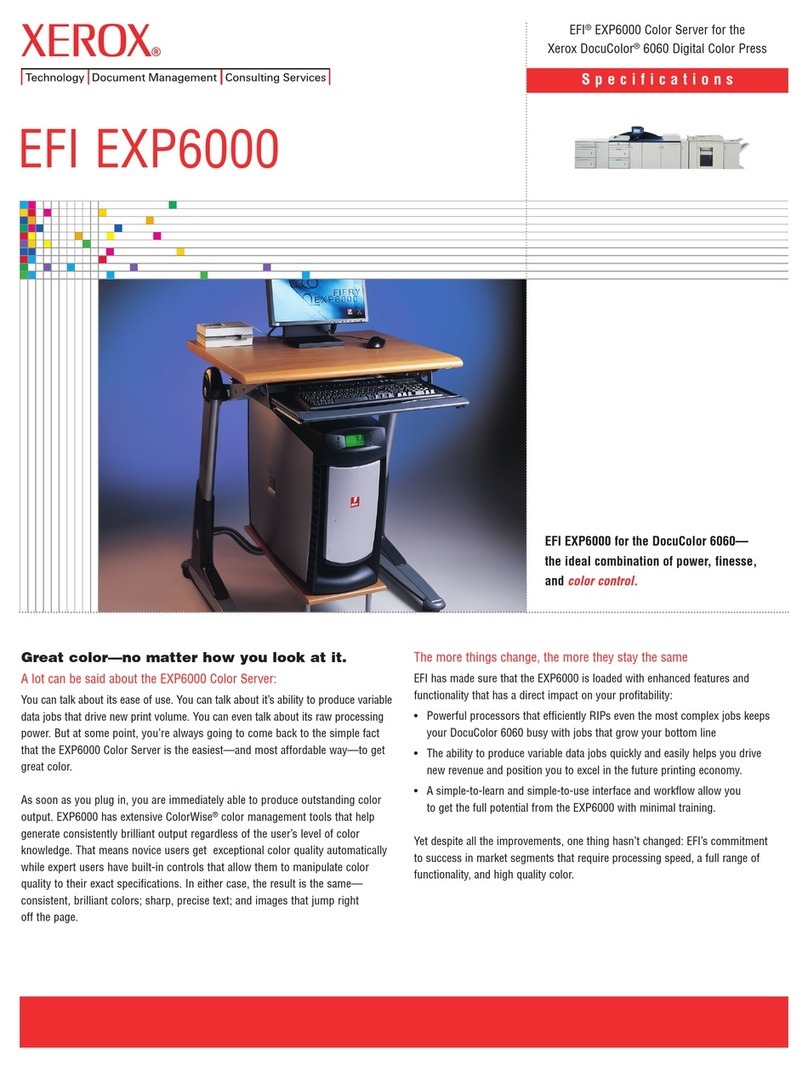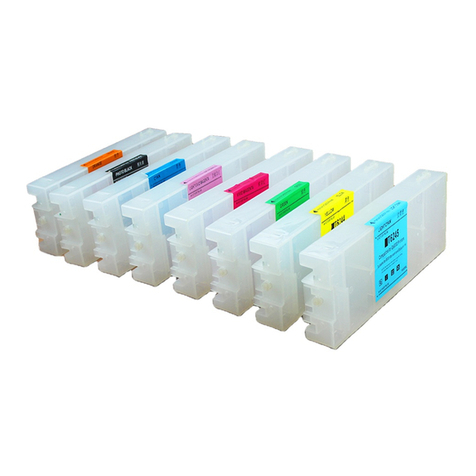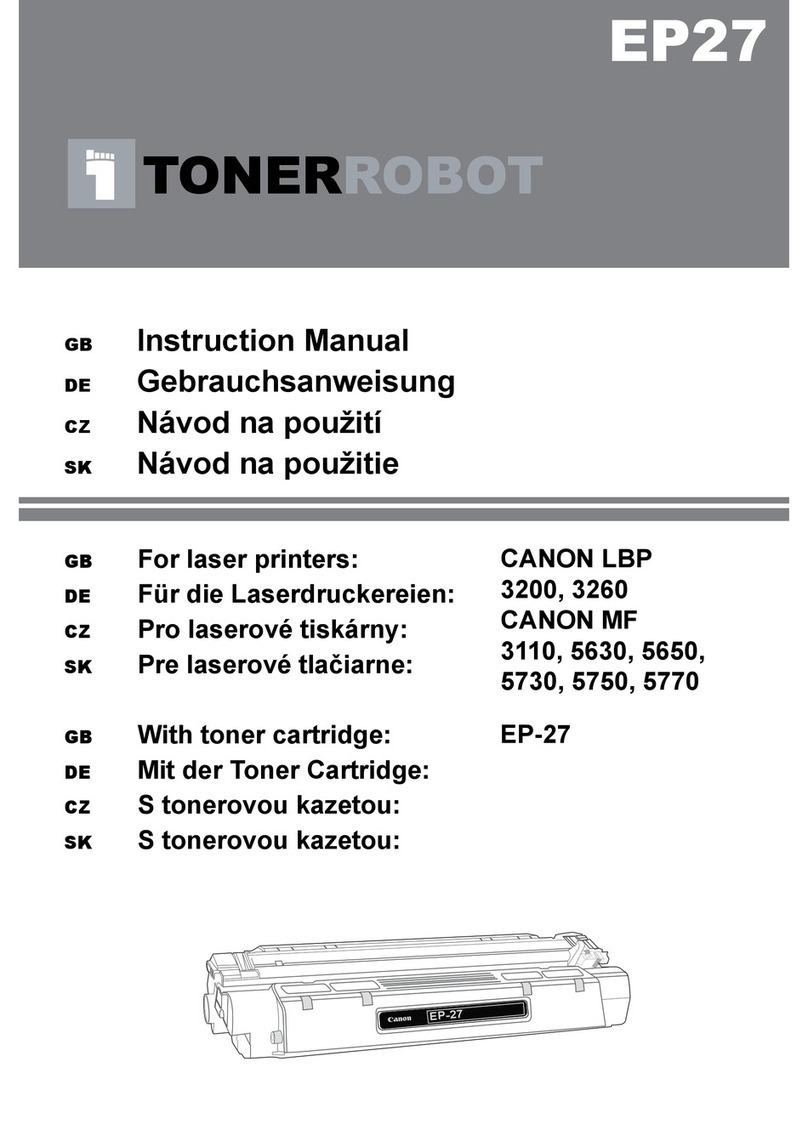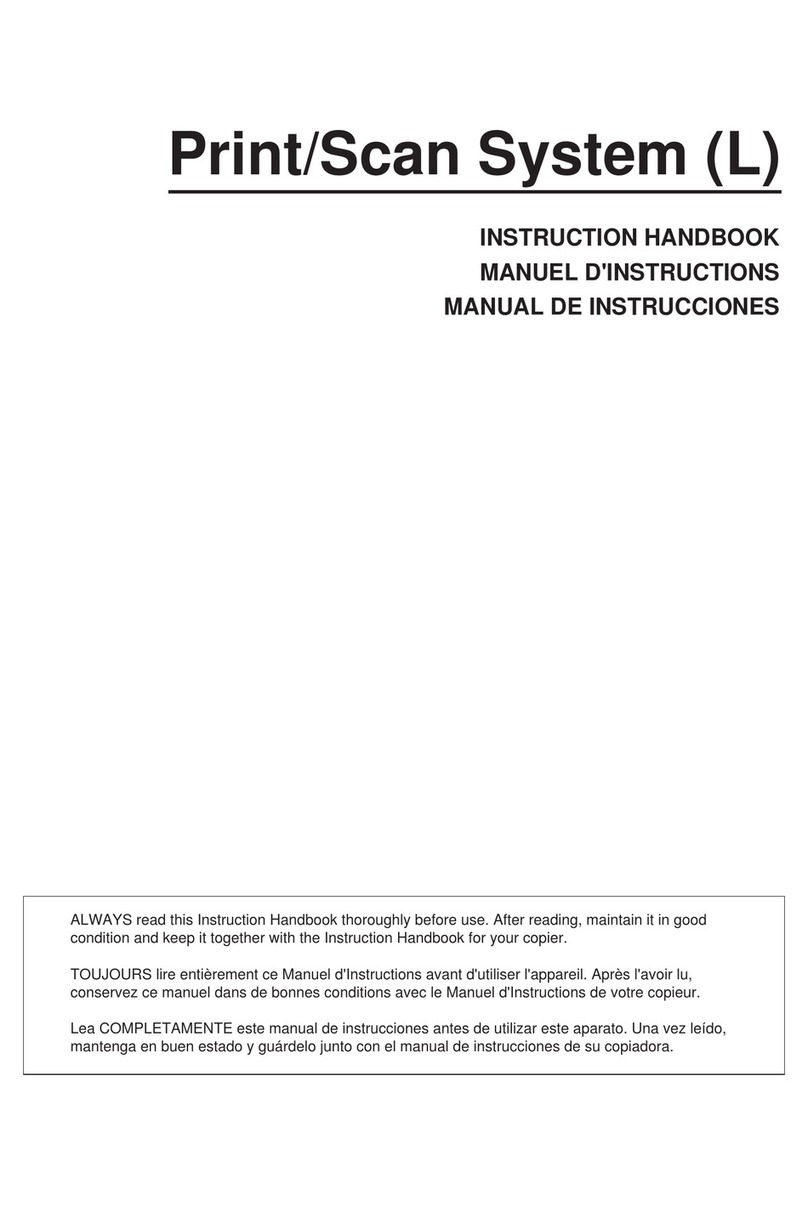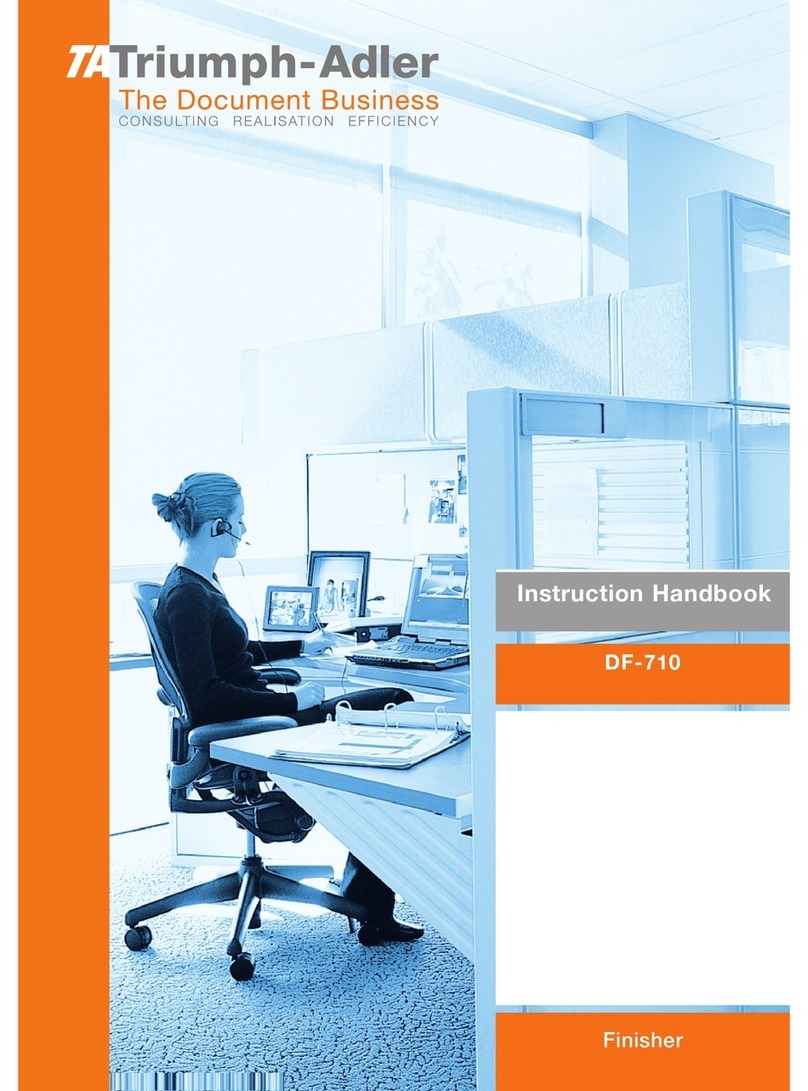PPU-700 Service Manual
2
2. SPECIFICATIONS
Model
Item
PPU-700-RK
PPU-700-PK
PPU-700-UK
PPU-700-RU
PPU-700-PU
PPU-700-UU
Printing method Line thermal dot print method
Print width 80 mm/640 dots
Dot density 8 × 8 dots/mm (203 dpi)
Print speed 150 mm/s (Fastest, print density level 2), (1200 dot lines/sec)
Font A: 48 columns, 12 × 24 dots
Font B: 64 columns, 9 × 17 dots
Font C: 72 columns, 8 × 16 dots
Number of print
columns
Kanji Font A: 24 columns, 24 × 24 dots
Kanji Font B: 36 columns, 16 × 16 dots
Font A: 1.50 × 3.00 mm
Font B: 1.13 × 2.13 mm
Font C: 1.00 × 2.00 mm
Character size
Kanji Font A: 3.00 × 3.00 mm
Kanji Font C: 2.00 × 2.00 mm
Alphanumeric characters, International characters, PC850, 852, 857, 858, 860, 863, 865, 866,
WPC1252, Katakana
Character type
Kanji (JIS Level 1, Level 2)
User memory 256 KB (Capable of registering user-defined characters and logos)
Barcode type UPC-A/E, JAN (EAN) 13 columns/8 columns, ITF, CODE 39, CODE 128, CODABAR, CODE 93
Line spacing 4.23 mm (1/6 in.), selectable by use of command
Paper
(See paper spec.)
Thermal paper roll Width: 58 to 82.5 mm
External diameter: φ203 mm max. (when using PHU)
Internal diameter: φ25.4 mm
Paper thickness: 65 to 150 µm
Presenter Minimum length: 90 mm
Interface Serial (RS-232C compliant), Parallel (IEEE1284 compliant), USB
Input buffer 4K bytes/72 bytes
Supply voltage DC 24V ±7%
Power consumption 100 W
AC adapter
specification
Rated input: AC 100V to 240V, 50/60 Hz, 150 VA
Rated output: DC 24V, 2A
Type 32AD-J 32AD-U 32AD-E
Weight 2.1 kg
Outside dimensions 163.2 (W) × 176 (D) × 144 (H) mm (See external view)
Operating temperature
and humidity
5 to 40°C, 35 to 85% RH (No dew condensation)
Storage temperature
and humidity
–20 to 60°C, 10 to 90% RH (No dew condensation)
Reliability Print head life: 150 km, 100 million pulses (At normal temperature, humidity with recommended
paper used)
Auto cutter life: 1 million cuts (At normal temperature, humidity, with paper thickness of 0.065 mm)
Safety Standard *1 VCCI Class A UL, C-UL, FCC Class A TUV, GS, CE marking
Note:
*1: Represents the safety standards acquired when CBM-made AC adapter (32AD series) is used.
